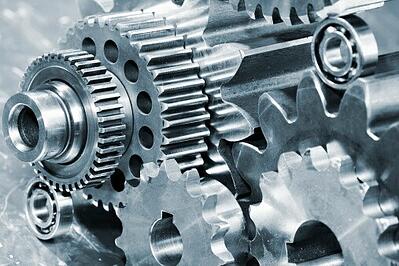Sometimes a group of technologies can be lumped together to create an entirely new technology. This is the case with rapid prototyping. Using a group of technologies developed for CAD design, ink jet printing, and other applications, rapid prototyping is revolutionizing the fields of engineering and manufacturing. What is rapid prototyping, and how is it relevant to the world of CAD?
What is Rapid Prototyping?
 Rapid prototyping borrows from 3D printing and several other technologies to produce accurate models of parts or assemblies quickly.
Rapid prototyping borrows from 3D printing and several other technologies to produce accurate models of parts or assemblies quickly.
Rapid prototyping is the process of fabricating a model of a part or assembly to scale using a variety of techniques. Rapid prototyping was built on the technique of stereo lithography, and also makes use of technologies like selective laser sintering, laminated object manufacturing, fused deposition modeling, solid ground curing, and ink jet printing.
During the process, a CAD model of the part or assembly is constructed and converted to .STL format. The rapid prototyping machine or 3D printer then creates the model one layer at a time. After each layer is generated, the model is lowered by the thickness of that layer so that the next layer can be applied. The surface of the model is then finished and polished.
What are the Uses for Rapid Prototyping?
 The models produced by rapid prototyping are realistic and sometimes able to undergo certain testing, as would the finished product.
The models produced by rapid prototyping are realistic and sometimes able to undergo certain testing, as would the finished product.
Rapid prototyping is most commonly used to quickly generate prototypes of parts and assemblies so that engineers, manufacturers, marketers, and purchasers can see what the design looks and acts like before it is put into actual production. It is used to generate prototypes of things like machine parts and production tools. The difference between prototypes generated by rapid prototyping is that these models are lifelike, made of actual metal, instead of a plastic guesstimate of the object. Even the most complex part or assembly model can be produced in about half a day, compared to the weeks and many machines it takes to produce a prototype by traditional manufacturing methods.
What are the Benefits of Rapid Prototyping?
The models produced through rapid prototyping are ideal for design teams to visualize the eventual product, and can even undergo some actual real-world testing, such as being monitored in a wind tunnel. Tooling models can also be created, and occasionally the finished models can be used in the actual final assembly of the product.
Rapid prototyping improves communication among designers, manufacturers, and other parties, allowing developers to identify and correct mistakes early in the design process. This speeds up development times and improves the lifespan of products. It allows for greater variation among the products produced, allows designers to develop more complex products, reduces time to market, and helps build products that don't become obsolete so quickly.
What is the Future of Rapid Prototyping?
Currently, rapid prototyping (like most newly developed technologies) is expensive and not actually so rapid. Researchers are working on faster processes. Additionally, the three materials used for rapid processing are aluminum, stainless steel, and titanium; researchers are working on ways to expand the number of materials that can be used for this process. The process also needs to be made more tolerant of temperature variations, and eventually it would be ideal if a single print head was able to deposit multiple materials instead of just one at a time.
The market for rapid prototyping is expected to reach $7 billion by 2025, aided by product patent expirations and the overall availability and affordability of 3D printers. Enjoy learning about 3D printing, CAD, and related technologies? For CAD users, Cadalyst is the brand of CAD information provider that offers the most complete and up-to-date information about CAD.









